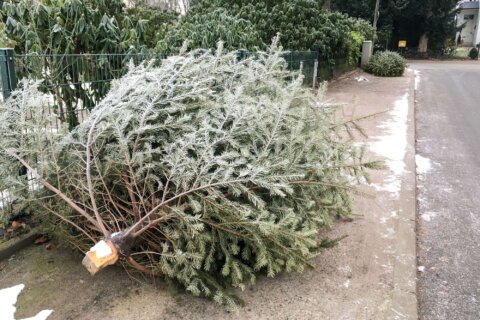Now that DC Water has completed the Northeast Boundary Tunnel, which is expected to divert 98% of combined sewer overflow away from the Anacostia River, it’s shifting its attention to the Potomac River.
“Now, we’re turning to the Potomac,” said Moussa Wone, vice president of DC Water’s Clean Rivers Project — the long-term plan to deal with the antiquated sewer system that runs through older portions of the District, including Georgetown.
The Potomac River Tunnel is the next major phase of the project to mitigate the District’s combined sewer overflow system — built before 1900 — which carries both sewage and stormwater in a single pipe.
During dry conditions, the sewage diverts to the Blue Plains Wastewater Treatment Plant.
However, during heavy rain, the overwhelmed pipes can’t carry all of the sewer water to Blue Plains, and a substantial amount flowed out of pipes into the Anacostia and Potomac rivers.
The newly-completed Northeast Boundary Tunnel — which includes drop shafts, and structures to temporarily store and pump stormwater — captured 100% of this past weekend’s rain, said Wone.
“The average rain was about 2.4 inches, and we captured approximately 137 million gallons, with no overflows into the Anacostia,” he said. While the system would be put to a stronger test with heavier rain during a short period of time, Wone said, “It was two days, but it was steady, and the system performed very well.”
While DC Water has done some smaller green infrastructure projects to slow down, clean, and in some cases, reuse stormwater to keep it from overwhelming sewers and flowing into the Potomac, Wone said, “we need to revert back to the tunnel, because of the cost, and because it’s historic Georgetown.”
Wone said the Potomac River Tunnel project is currently in procurement. DC Water expects construction of the tunnel to begin in early 2024.
“The project is seven years,” Wone said. And he expects “to put it in operation by February 2030.”
While DC Water expects to capture 98% of sewage overflows into the Anacostia River, modeling shows that the system will need to divert slightly less from the Potomac.
“If we are able to capture 93% of the sewage for the average year, we will meet the water quality standards,” he said.
Editor’s Note: An earlier version of this story misstated the number of gallons captured by the Northeast Boundary Tunnel. The story has been updated.








